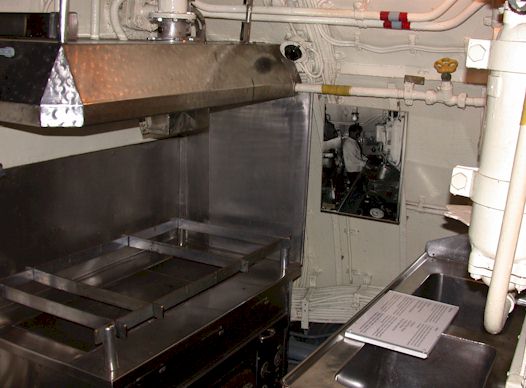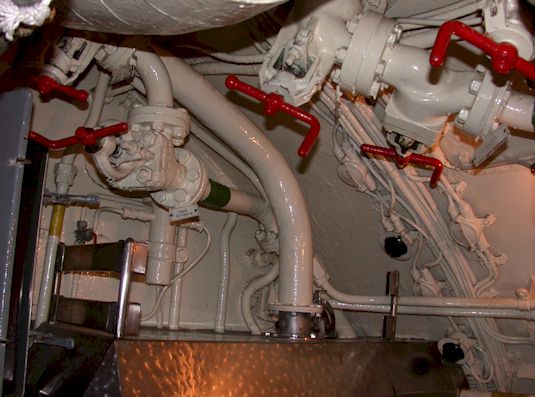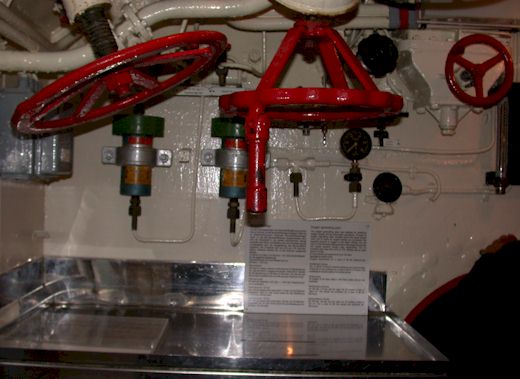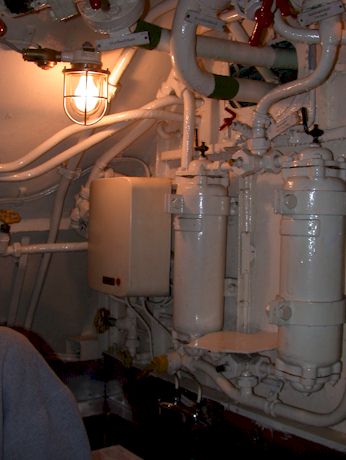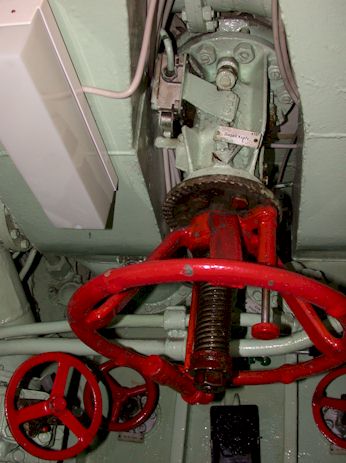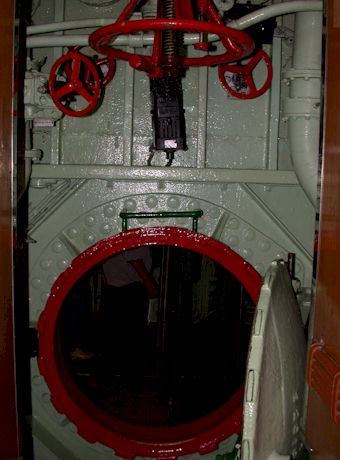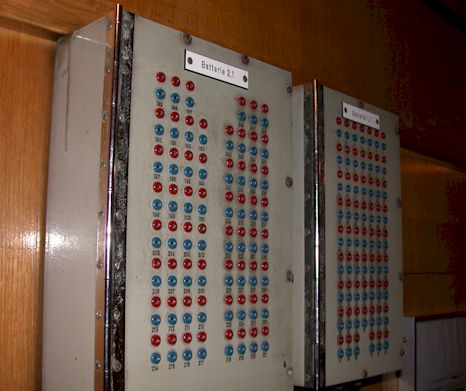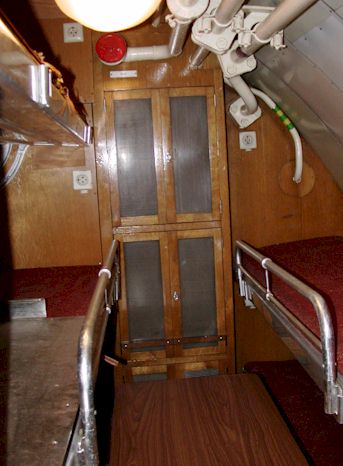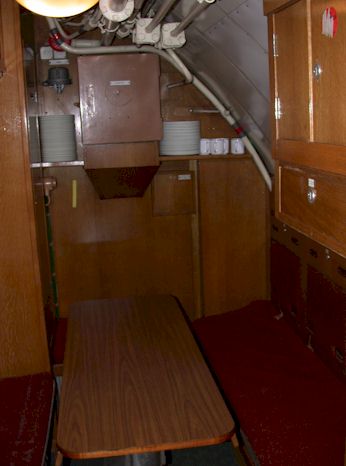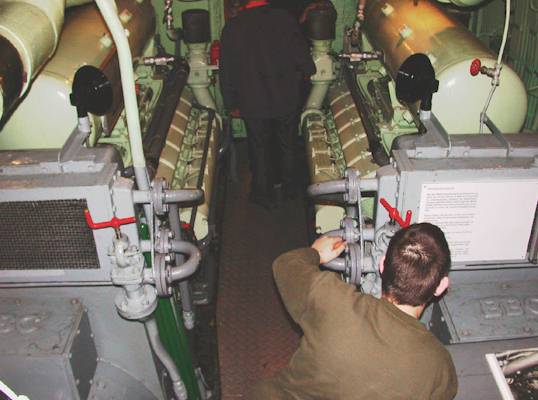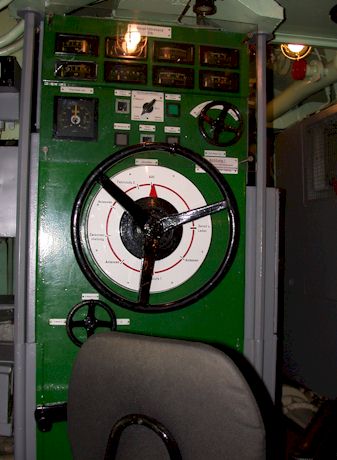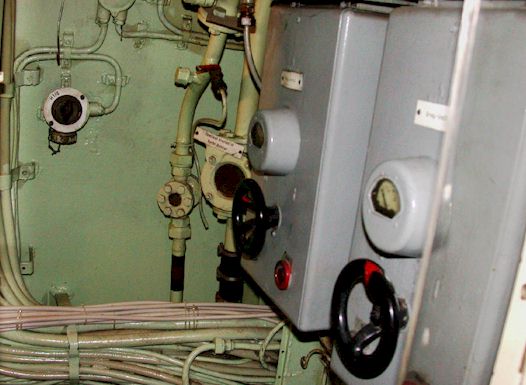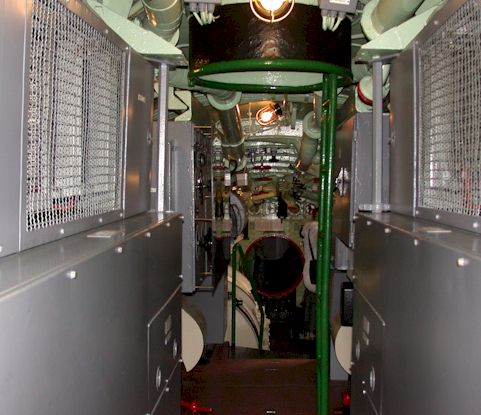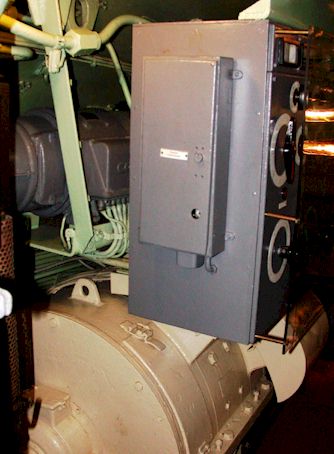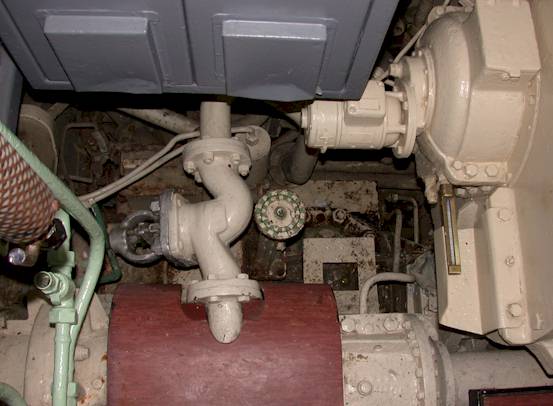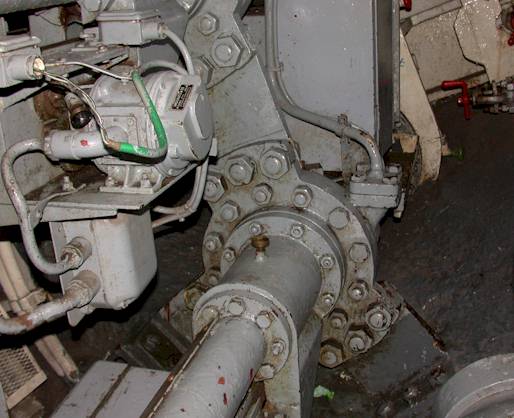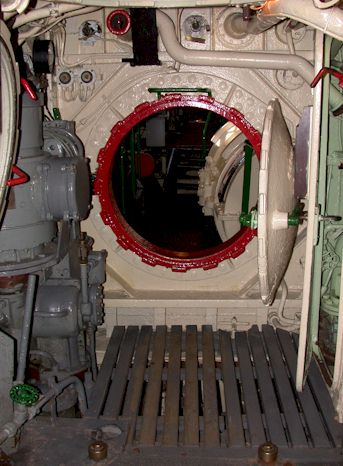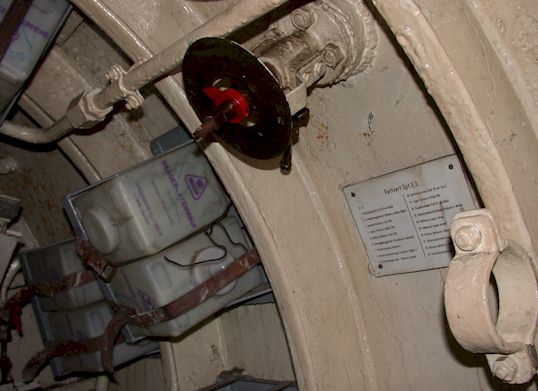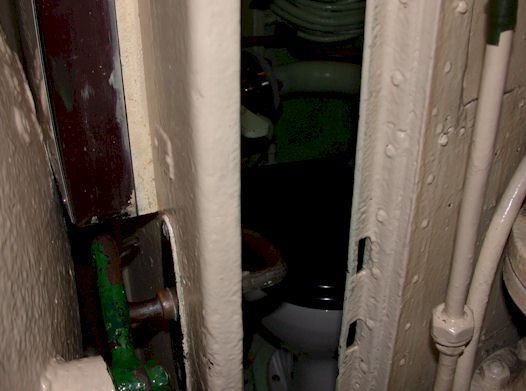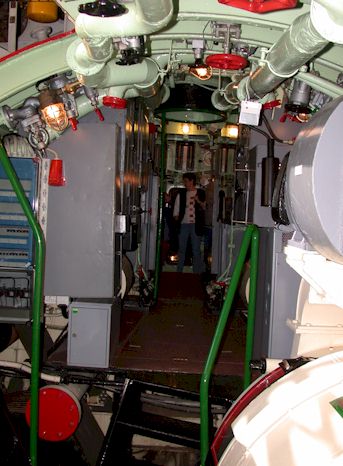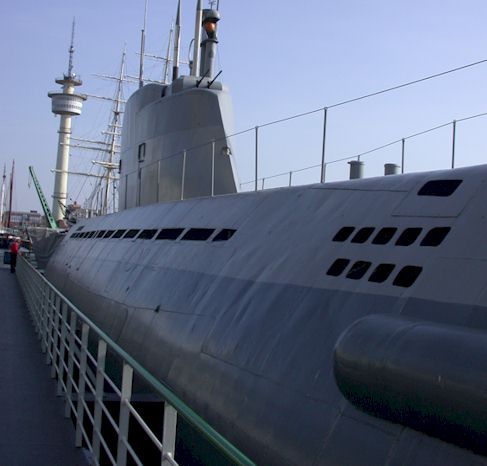The Boat That Changed the Submarine Warfare
Text by Frank Spahr
Photos by Frank Spahr
(Due to the large number the images in this photo essay, the material has been split into two parts to facilitate faster downloads – Ed.)
U-Boot Type XXI in Detail: Part 5 – From the galley to rear crew quarters
View into the galley, showing detail of the stove with copper extractor hood. Although cramped, kitchen facilities such as this were something that crews of a type VIIC U-Boot could only dream about.
What would you expect to find at the galley’s roof? Yepp, you guessed it – more valves and plumbing.
Oxygen generator in the galley.
Detail of fresh water supply for the galley.
Continuing down the aft walkway, we find this large valve for Dieselluft Kopfventil (air supply for diesel engines). An unmistakable sign that the engine room is nearby!
The bulkhead between petty officers´ quarters and diesel engine room.
Control panel for batteries
Astern of the control room and galley there are more living rooms for the petty officers; German postwar submarines were manned only by officers and petty officers, there were no enlisted men on board. Basically, all German submarines have been manned by volunteers only.
Petty officers´ quarters…
… and the similar petty officers’ compartment at the opposite side.
U-Boot Type XXI in Detail: Part 6 – From diesel to electrical engine room
Entering the diesel engine room, one is struck by the bulk of twin diesel engines. However, the diesels in the Type XXI were smaller and less powerful than the electrical engines (2,000 vs. 2,500 hp), another difference towards earlier submarine designs.
In the post-war service, the diesel engines of Wilhelm Bauer were used exclusively to recharge the batteries and had generators coupled to them as shown here.
Lime absorption device for carbon dioxide.
More plumbing and a lone lamp at the roof of the engine room.
Also housed in this part of the boat are the powerful compressors used to produce compressed air to empty the diving cells. Here is one of the compressors and the next bulkhead leading to the electrical engine room.
Compressed air ducting
Compressor tank sitting on top of the engine block.
Gauge for compressor RPM.
The main electrical engines and the silent engines are housed in the next compartment.
Controls for the electrical engines.
U-Boot Type XXI in Detail: Part 7 – From electrical engine room to aft compartment
In the electrical engine room, the all-abundant plumbing is partially replaced by equally abundant electrical wiring.
View through the entire electrical engine room.
Fuel gauges for diesel tanks.
Electrical “silent” engine.
Downward view towards engine shaft.
Lots of valves overhead here, too.
View into elctrical engine room. The port engine has been removed to allow the visitors some movement, I can barely imagine how the crew moved around in here with both engines in place…
Bulkhead to aft compartment with more devices, cabling and plumbing.
View of the starboard propeller shaft
U-Boot Type XXI in Detail: Part 8 – Aft compartment
A peek towards rudder engine with emergency manual steering wheel dominating the view.
Close-up of the rudder actuator.
View from astern on the electrical engine room bulkhead. The aft compartment houses also a toilet, an airlock for Kampfschwimmer (German Navy SEAL´s) and the countermeasures system. Whereas the lock is a post-war addition, the Pillenwerfer (Pill thrower) was already used in the war.
Decoy ejection system (Pillenwerfer). The system, introduced with the Type XXI and used in an almost unchanged state since, shoots cans filled with a substance that produces air bubbles that disturb enemy detection systems. Later on, the system became known as the Bold, short for Lügenbold (something like ”lying little urchin”)
(detail_xxx_73.jpg)
My best attempt at photographing the stern toilet. Elcosed toilet cabins were another ”luxury” in which the Type XXI excelled over earlier German submarines.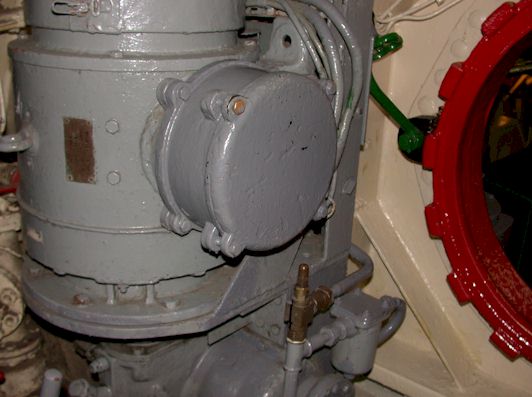
The UPM – Unidentified Piece of Machinery 😉
View from astern, railing for exit visible
Fresh air again.
Back to U-Boot Type XXI in Detail, Part I
This article was originally published in IPMS Stockholm Magazine in November 2003.
